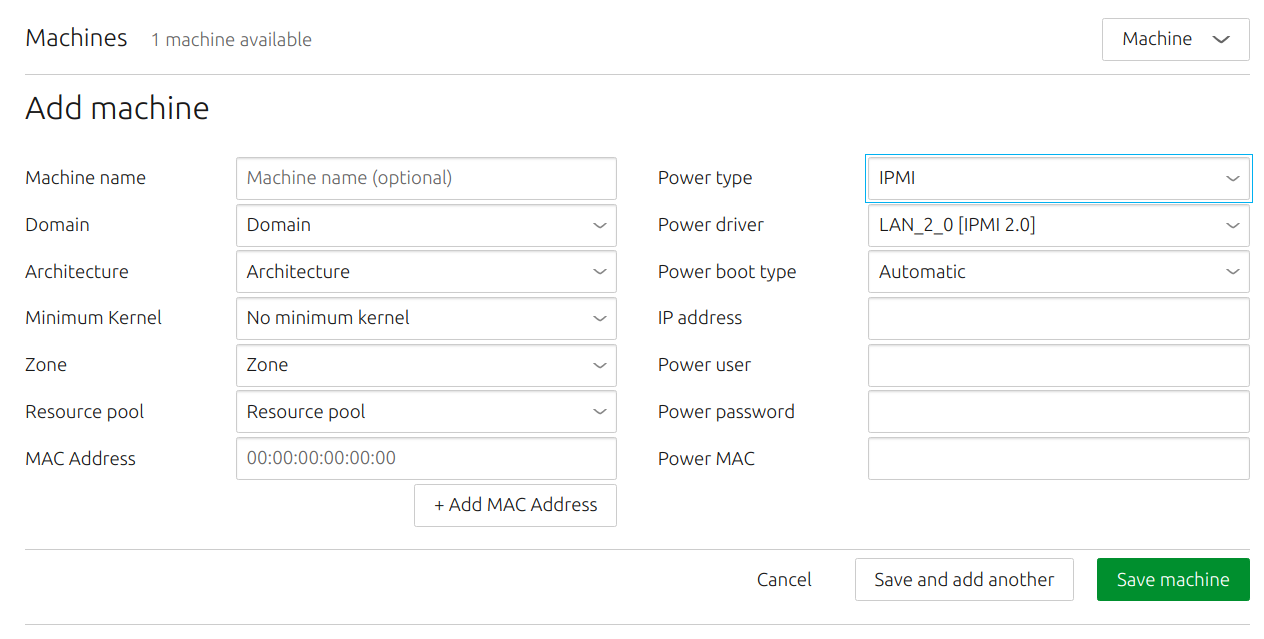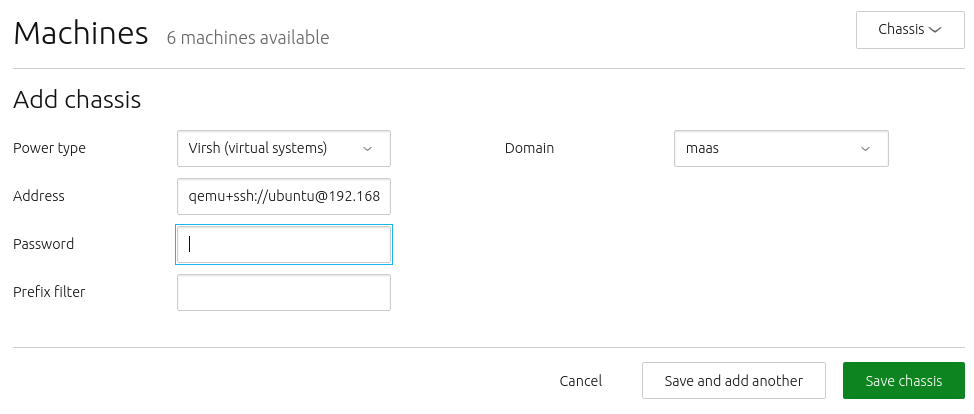Add Nodes
Adding a node to MAAS is typically done via a combination of DHCP (and TFTP), which should, by now, be enabled in your MAAS environment, and PXE, which you tell the system in question to use when it boots. This unattended manner of adding a node is called enlistment.
Note: Configuring a computer to boot over PXE is done via its BIOS and is often referred to as "netboot" or "network boot".
Regardless of how a node is added, there are no special requirements for the underlying machine. In particular, there is no need to install an operating system on it.
Once MAAS is working to the point of adding nodes it is important to understand node statuses and node actions. See Node statuses and Node actions respectively.
Enlistment
As explained, to enlist, the underlying machine needs to be configured to netboot. Such a machine will undergo the following process:
- DHCP server is contacted
- kernel and initrd are received over TFTP
- machine boots
- initrd mounts a Squashfs image ephemerally over HTTP
- cloud-init runs enlistment and built-in commissioning scripts
- machine shuts down
The enlistment scripts will send the region API server information about the machine, including the architecture, MAC address and other details which will be stored in the database. This information-gathering process is known as automatic discovery.
After the enlistment process, the machine will be placed in the 'New' state.
Typically, the next step will be to commission the node. See Commission nodes.
Note: MAAS runs built-in commissioning scripts during the enlistment phase so that when you commission a node, any customised commissioning scripts you add will have access to data collected during enlistment. Follow the link above for more information about commissioning and commission scripts.
As an alternative to enlistment, an administrator can add a node manually (see below). Typically this is done when enlistment doesn't work for some reason.
KVM host nodes
For more information about adding nodes to use as KVM hosts, please see Add KVM pods.
Adding virtual machines as nodes
After you have deployed a machine to use as a KVM host, you can "compose" VMs to add to MAAS. Please see the Compose a virtual machine section for more information.
Add a node manually
Enlistment can be done manually if the hardware specifications of the underlying machine are known. On the 'Machines' page of the web UI, click the 'Add hardware' button and then select 'Machine'.
Fill in the form and hit 'Save machine'. In this example, IPMI machine is being added:

Note: The underlying machine will still need to be configured to boot over the network in order to be commissioned. MAAS will not do this for you.
BMC enlistment
2.4
Note that in MAAS versions prior to 2.5, you are required to provide the MAC address of the PXE interface when adding a new machine manually.
2.5+
Beginning with MAAS 2.5:
IPMI machines
For IPMI machines, you only need to provide IPMI credentials. MAAS automatically discovers the machine and runs enlistment configuration by matching the BMC address.
Non-IPMI machines
For non-IPMI machines, you must specify a non-PXE MAC address. MAAS automatically discovers the machine and runs enlistment configuration by matching the non-PXE MAC address.
Add nodes via a chassis
Use the chassis feature to add multiple nodes at once. To do this, instead of selecting 'Machine' as above, choose 'Chassis' from the drop-down menu. In the following example, MAAS will add all available VMs from the given virsh address:

The required fields will change based on the type of chassis you choose.
Note: As with the manual method, the underlying machines will require netbooting.
